Lessons Learned in Substitution and How I Served Sour Soup to a Chef
During our honeymoon in Budapest, nearly nine years ago, Aimée and I became smitten with Hungarian cold cherry soup. It was sweet, yet tart, and smooth, smooth, smooth in texture.
Some years later, I decided to recreate that memorable soup for my wife on a whim. I had a general concept of ingredient substitution, but no real knowledge of what worked and what didn’t work. Unfortunately, the story does not have a happy ending.
You see, I decided to substitute the main ingredient, cherries, with strawberries, because we had several pails of hand-picked berries sitting around (which I later found out Aimée had intended to turn into jam and pies). I also decided to use one of the white wines we brought back from our honeymoon, which had been used for decoration due to an unusual unnoticed defect at the time of purchase – there were fruit fly wings in the wine. (In my feeble defense, I did pass the wine through a fine sieve – twice – and figured I was cooking with it anyways, so the cooking would kill anything bad in the wine.)
My undoing, though, was probably due to my lack of knowledge of the yield of fresh citrus – and expiry dates. OK. Without looking it up, can anyone tell me about how much juice can be extracted from a lemon? A teaspoon? Tablespoon? As I didn’t have any fresh lemons, I estimated that about a half of a cup of RealLime would do the trick.
To recap, in my effort to innovate, I combined a bushel of the freshest, best-tasting hand-picked strawberries available with an entire bottle of sour wine, LOTS of lime juice, brought them to a near-boil and then added 2 cups of cream (which curdled immediately).
The result was the most sour, tart, grainy, inedible 3 quarts of soup that you could ever ask for. After some post-disaster investigation by Aimée, it was also discovered that the RealLime was 5 years past due. I will not make those mistakes again. Gross. {Editor’s note: In my defense, I do not usually keep items in my fridge that are past date. I do not even purchase RealLime. It had been given to us in a box of food from acquaintances who were moving.}
Since then, our internet connection has gotten faster, Google was created, and our cookbook library has expanded. I’ve learned a few tricks on how to better make substitutions in the kitchen, and increase my culinary education – without having to learn from such drastic mistakes.
Photo by Lynn
The big picture: ratios
To an engineer, cooking can often be seen as a recipe or formula. Each ingredient has a recommended quantity that needs to be added to the dish, but variations between recipes can be usually accounted for by changing the ratios of any of these ingredients. Let’s look at pancakes, as an example.
If you’ve tried out the pancake recipes from Aimée and Katie’s pancake posts from the past month, you’ll notice that changing the type of flour, or the type of sweetener, or the ratios slightly can have an important effect on taste and texture of the final product. And this is just modifications to the ingredients, with no comment on pan temperature or cook time.
As per Jeff Potter, author of Cooking for Geeks, a sample of 8 recipes for basic pancakes found on the internet showed that all recipes had the same basic ingredients, and had the following relative ratios (all by weight).
- Milk – 51.3% [range of 45.8% to 53.0%]
- Flour – 29.7% [range of 24.8% to 33.4%]
- Egg – 8.4% [range of 4.9% to 12.5%]
- Butter – 4% [range of 1.7% to 6.8%]
- Baking Powder – 1.8% [range of 1% to 2.8%]
- Salt – 0.6% [range of 0.2% to 1.1%]
What I find interesting is that all the same ingredients are there – even the salt – but the ratios change a little. This isn’t such a big deal as most recipes (aside from pastries) are forgiving of measurement error.
However, as Jeff points out, there’s probably a good reason that every recipe that calls for buttermilk also calls for baking soda (there is, and it has to do with chemistry). If you’re going to switch out ingredients, you should probably be prepared to do a little more research than I did with my strawberry soup, or be prepared to throw out your recipe.
Why it sometimes doesn’t matter
Measuring ingredients in most kitchens is inherently an error-prone enterprise. In Canada and Europe, some ingredients are called for by ml instead of cups and spoons. The size of a cup, however, varies from vessel to vessel. Most measuring cups in the states will show 250ml, whereas the true measurement is 237ml. And if you add up 16 tablespoons, yet another value.
To further drive this point home, Potter had 10 friends measure out 1 cup of flour and weighed each one, and the high and low values varied by a whopping 31%. So unless you’re a keener and know all this information, or whether you know the recipe writer intimately and the equipment they use, your recipe will invariably taste a little different from theirs.
Photo by Lynn
I have come to accept and embrace this. I used to be a huge stickler for straight lines and level measurements in the kitchen. In fact, Aimée and I almost broke up during one of our first baking projects together – an inprecise, organically-shaped gingerbread house.
I am now more chilled out and am armed with a little more knowledge, and more safely try ingredient substitutions when I’m preparing a special meal.
Quick Links for Substitution Tables
- Baking Ingredient Substitution Table :: Joy of Baking
- The Cook’s Thesaurus :: Foodsubs.com
- Ingredient Substitutions :: Cooking for Engineers (I LOVE! the way they lay out recipes here. Succinct and beautiful)
Creativity and ingenuity can go a long way, especially if you have a “feel” for things when you are substituting ingredients, but when in doubt, if you don’t have an amazing real-life culinary reference person at home (like me), then consult the links above, or reach for the Food Substitutions Bible.
And the answer for amount of juice in a lemon is about 2 Tablespoons. I had 4 times too much boiling acid, which curdled the cream in a second.
Aside from substitution errors (salt for sugar), have you ever had a massive, epic substitution failure that you can advise us not to repeat?

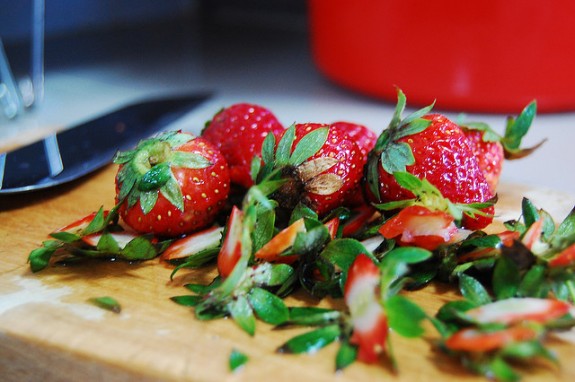
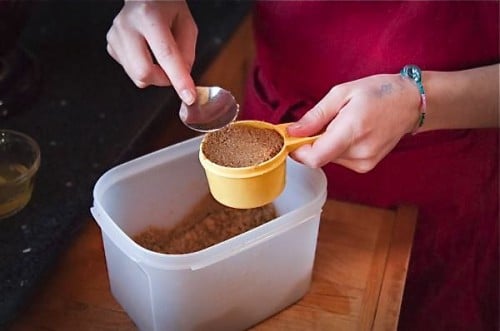
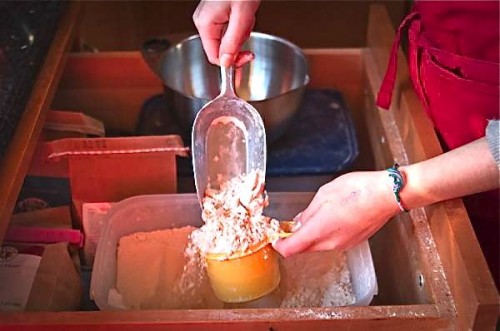

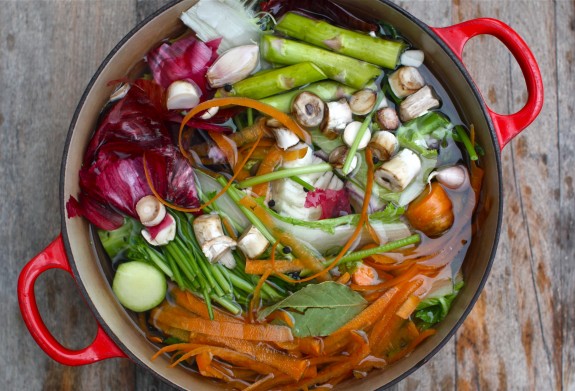
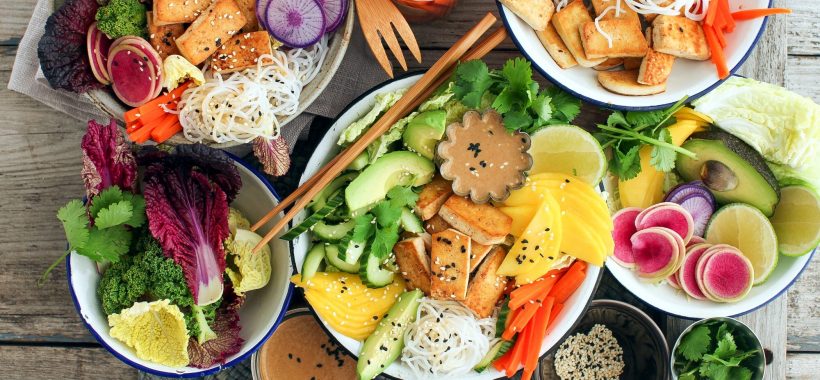
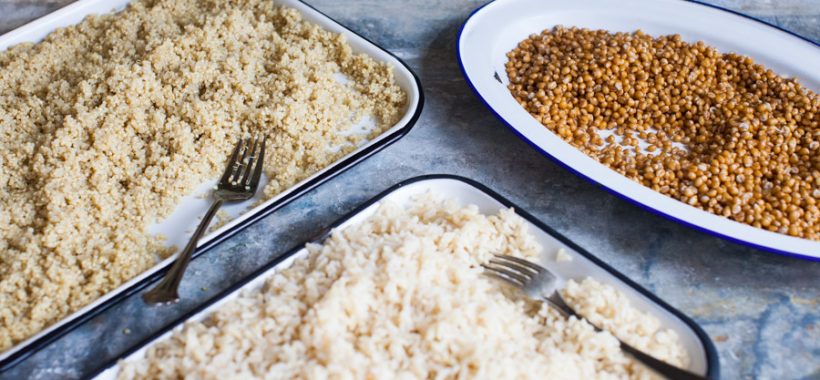

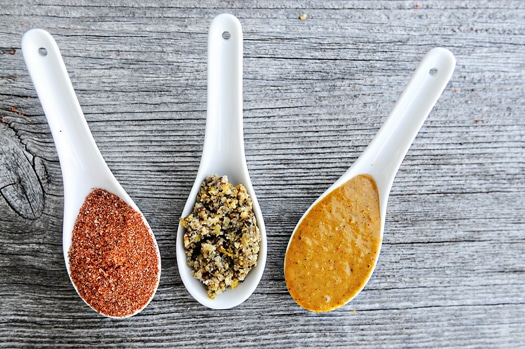
Super awesome info… love those great links too!
Thanks. I seriously love the way Cooking for Engineers lay out their recipes. Nice little boxes.
Oh man, I cringed. I love that you wanted to recreate that soup for your beautiful wife, but oh did I cringe as I kept reading! That’s the mark of a great writer, Danny. You had me tasting that soup’s flavor profile as I read! Excellent advice about substitutions. Since you’re a math guy, you should check out Michael Ruhlman’s iPhone app, Ratio. I think you’d love it.
Aimee actually saved the recipe somewhat with an immersion blender, which made the texture tolerable.
Nothing could be done for the flavor, unfortunately.
This really has nothing to do with your post, because you are clearly an intelligent man whose heart was in the right place……Many years ago I was sick and it was a child’s birthday, so my ex took upon the task of making a cake (from a box.) I still laugh when I recall him yelling from the kitchen, “What is ‘yield’ and where do we keep it?” His specialty was and remains ramen.
I have certain specialties too and don’t often stray, due to Aimee’s prolific competence in the kitchen. Every once in a while, though, I like to try to do something special. Something special + too many ill advised substitutions = disaster.
What a great post! Will be printing this out for reference. Thank you for this. I can just imagine the look on your face (and your wife’s) when you realized your beautiful soup was anything but!
Measuring cups and spoons vary tremendously in their volume. I’ve read that a good set of stainless steel cups and spoons is the only way to go.
I’ve recently purchased Ratio (Ruhlman) which advocates measuring everything by weight and I’ve decided to get myself a good scale to use.
We weigh for pastry-type desserts and other critical stuff, but for regular stuff like baking and breads, just add a little flour if it looks runny, or a little milk/water if it looks dry. THAT’s safe most of the time.
That makes perfect sense. I believe I will adopt that rationale, as well! Thank you.
Haha, yeah I had a few epic fails in our early days of marriage. The worst was trying to imitate a restaurant dish as well. I wanted to make mushroom wraps like the ones from Jason’s Deli. I knew my wraps were like a month old, but those things never go bad, right? And the cheese wasn’t quite right and the guacamole was store bought, not home made, but those things would have all been fine if….I had remembered the mushrooms were sauteed and THEN put in the wraps. I marinated them, and stuck them in raw figuring they would somehow cook inside the wraps. My sweet hubby actually ate his. I made a P, B & J.
At least you were just trying to recreate your honeymoon. I made this recipe in the kitchen of our log cabin ON our honeymoon : ) Thinking back makes me realize how much my kitchen skills have grown in just 2 years!
Hah! I tried buying honey-nut Cheerios on our honeymoon in Hungary, but couldn’t read the packages. Ended up buying buckwheat (heavy like rocks) O-shaped cereal and putting -surprise!- chocolate milk on them. All packages were opaque, so I didn’t have any clue until it was together in the bowl.
While I appreciate the links, I’m embarrassed to be an engineer right now. Your story gave the vibe that you messed up because you’re an engineer (perpetuating the stereotypes that engineers can’t do anything but math), instead of because you didn’t know what you were doing and failed to look it up beforehand (which is the actual reason).
In answer to your question, my failures come from when I try to be “crafty” and use up the mismatched leftovers sans recipe. I’ve learned to avoid that approach since college. 😛
As any engineer or software programmer knows: garbage in – garbage out. I just learned that one first hand, that’s all.
(to this day, I still believe it would have been amazing if I hadn’t used so much outdated RealLime juice, but am too afraid to find out).
Aren’t those some of the best food memories, though? The mess ups? 😉 On our second date, my husband grabbed what he thought was the parmesan shaker and proceeded to cover his pizza with SUGAR! 😉
Yes, the mess-ups are certainly memorable – but I have equally fond memories of either superb meals, or great fellowship around the table, with no recollection of what we ate.
Your husband must have a very odd-shaped parmesan shaker to get it confused with sugar – unless it was because his head was elsewhere…
This brings to mind one of the most memorable substitutions of my childhood. One of my sister (who will remain nameless) was baking a jelly-roll type of dessert that called for walnuts. We were out of nuts so she substituted….watermelon seeds. Big black ones.
I can still remember picking them all out. Epic!
Hmm. I don’t recall seeing watermelon seeds as a substitute in ANY of the resources we use.
Love the story in this post. I think we have all made similar ratio mistakes. Another great book on ratio and substitution you might like is Michael Ruhlman’s Ratio book.
Second recommendation for Ratio. I’m definitely going to look this one up.
Thanks for the tip!
I was brought up around cooks who tasted and seasoned as they cooked. Early in our marriage I tried to do the same thing but I didn’t understand how spices worked. The spicy seasonings that I added would somehow get hotter the longer the dish cooked. Thankfully I learned the dish could be saved with cream, yogurt, or some other dairy. I also made some incredibly salty food because the salt would take awhile to dissolve, and I would taste immediately after adding more and not be satisfied. I learned to mash up a potato or add a tomato to salvage it but it’s so much easier to get it right the first time!
Hah! I remember tasting the soup and thinking, “This has got TANG!”
And then she came home.
Just last week I baked a “minted banana bread,” at the request of my 4-year-old, even though I have a tried-and-true banana bread recipe that does not involve mint, and I wasn’t so sure I wanted to experience the “minted” version. The mint was to be provided by peppermint extract. I don’t think I have any of that, actually, but I had peppermint OIL. I went a bit scant with it, and figured that it would be fine. Alas, no. The minty smell in the kitchen while the bread baked was so strong, it made my eyes water. My eyes were *burning* as I took it out of the oven. The kids gamely tried it, as did I, but it was like eating a candy cane-turned-bread– a surreal and massively disappointing experience. Fortunately, my husband likes candy canes enough that he was willing to finish off the loaf over the course of the week. Even he, however, would probably not recommend that I make the same mistake again.
Yes, I too tried to make the best of it and ate a little bit after every meal for “dessert”. I tried feeding it to my brother who usually eats anything, but he wouldn’t touch it. That’s when I knew I had to throw it out.
I was sad.
Don’t ask me how and when, but tofu and fish never go hand-in-hand 😀
Ever? I won’t ask, but thanks for the tip. I’m not a huge tofu fan anyways, but will usually eat it without complaints.
Oh that story made me laugh, your soup was full of good intentions at least even if it was sour! My failures in the kitchen are usually do to inattention, I’ll be doing too many things at once and then all of a sudden realize that I might have forgotten an ingredient or measured it incorrectly and there’s no way to know for sure until it comes out of the oven not quite like I expected.
I’m a slow, methodical plodder in the kitchen. There’s not usually much chance of error due to inattention, but starvation is more likely. I’m really quite slow.
Lovely post, Dan! My husband spends a lot of time in the kitchen, and I often take his competence for granted, especially when I give him inadequate directions and expect him to know exactly what I mean, which may or may not have happened last night. I couldn’t rightly say.
I try to seldom take Aimée’s competence for granted, especially when we get in from the car, and by the time I have unloaded the kids, she can have toast and eggs on plates for all 4 of us and the kettle is boiling for coffee.
I’d be able to fill the kettle with water in the same amount of time.
I love it that you shared your failures with us as well. And how I’d love to see the gingerbread house that almost caused your marriage made in heaven not happen. Thank goodness you all got over that 🙂
Hmm. That was a long time ago – before we had our first digital camera. All I remember is telling her that the dimensions of the plan were wrong, and she was like, “whatever – we’ll just add more icing”, and that really got my goat. The house would not have passed inspection.
Note to non-mathematical bakers: if your recipe calls for a right-angled triangle whose sides have ratios of 3, 3 and 5, don’t trust it. (geeks know it should be 3, 4 and 5)
Oh Danny, what a great and funny post! I so appreciate your candor. 🙂 Although I can’t remember a recipe that went quite so awry, I do recall my first attempt at capturing a wild sourdough starter several years ago. Oh dear. Thanks for sharing, Danny – I look forward to reading more of your posts.
At least you had a great story to tell from the experience! 🙂
My mother is Hungarian, and her cold cherry soup is one of my fondest childhood memories. You just reminded me that I haven’t made it in a while. Gotta get some cherries soon!
Great post! I appreciate your candor and your sense of humor about this blunder. Many years ago I tried to catch my own wild sourdough starter and that went horribly bad, but at least I didn’t serve it to anyone! 🙂
I had an epic fail making brownies! My son is allergic to wheat and eggs, so I was using a GF brownie mix. There are several egg substitutes that work, but I learned you need to consider WHAT you’re making and what you’re baking IN. I decided to use the mix of water, vinegar, and baking powder to make the brownies. Which is fine, if I was baking in a large pan. But I was making cupcake sized ones. Um, yeah. Have you ever done that science fair volcano? I had that in my oven – chocolate flavored, of course! It was definitely blog-worthy.